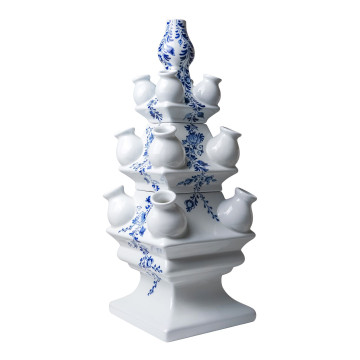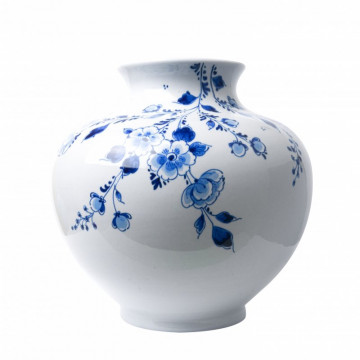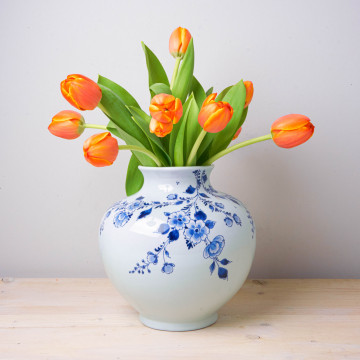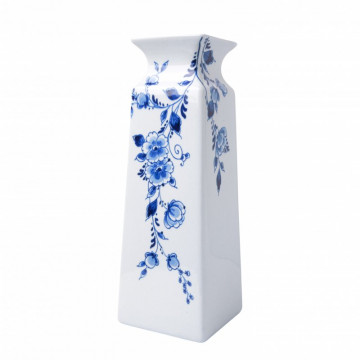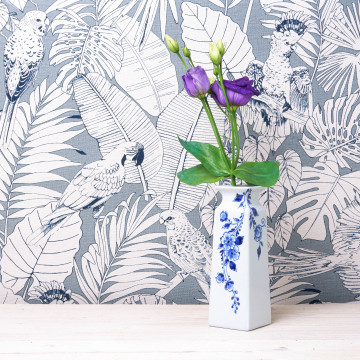
Handmade vases from the Netherlands

Delft blue made with love
Delftware pottery is traditionally a product made with a great deal of knowledge and love for the craft. In a time when more and more fast techniques are used in factories far away from here, we consciously go back to where it all started. With time, attention and much knowledge of the product, making beautiful pure Delftware. Right here in the Netherlands. That is the essence of the Made-Lief collection. As the name suggests, it is a collection made with love and like the flower the daisy, Delft blue has become a national symbol for the Netherlands. All Delftware products in the Made-Lief collection are handmade in the authentic way that has been done for four hundred years.
The Made-Lief collection is Delft blue in its purest form.

Delft blue, a timeless craft
Delft blue pottery has been around for over four hundred years. It is a special craft that is instantly recognized around the world as something typically Dutch. Delftware porcelain originally came from Delft, where potters wanted to create their own variation on the Chinese blue-on-white porcelain that was wildly popular at the time. Those shiploads of porcelain from the Chinese porcelain cities were very fragile and during the long sea voyage, some shipments got damaged or sunk to the bottom of the ocean. Also, the Dutch who ordered porcelain from China did not always get what they had hoped for. That can be done more efficiently, they thought in Delft and the Delft blue porcelain was born. Via the water around Delft, the pottery was easily transported throughout the Netherlands and to other countries, and demand for Delftware skyrocketed.
The Delft blue magic factory
The special thing about a craft is that you need people's knowledge and skills. Something that is irreplaceable. For example, you cannot learn or study Delft blue painting anywhere, it is only passed down from master painter to apprentice and this internal training often takes years. The same goes for making the clay. Using carefully chosen raw materials from around the world, we mix our own clay at Heinen Delfts Blauw. We also make our own paint, which takes a week to make. We pour the clay into molds and let it dry just long enough so that the outer layer is hard, but the inside is still liquid. This creates a beautiful vase that is neither too thick nor too thin. This is all knowledge we have accumulated over the years through endless trial and error. The raw vase is then polished and we apply a layer of engobe to the outside. This is a thin layer of liquid clay, which makes the surface suitable for painting. After the painting, the vase is given a layer of glaze after which it goes into the kiln to be baked at a high temperature of about 1060 degrees Fahrenheit. The charcoal-colored paint now turns into the iconic Delft blue color thanks to the glaze. Like some school children remarked during their tour of our factory; "it is like a magic factory!"
How a Made-Lief vase is made:

1. From inspiration to creation
It all starts with inspiration. For the Made-Lief collection, we took our inspiration from traditional Delft blue floral decorations and shapes. Flowers and leaves are one of the oldest Delft blue decorations on porcelain. The idea is shaped through sketches on paper. Thus we explore the decorations, refine the shapes and so the concept slowly comes to life. Then a 3D design is made from the sketches. Our designer creates these digitally so that we can visualize the vases in detail, including dimensions and proportions.

2. Ceramic casting
Now that the design is ready, the making of the vase begins. We carefully compose our own clay based on more than ten different raw materials. Because we always need a white background for our Delftware decorations, we have to import raw materials from England and Germany. We do this because Dutch clay does not bake white, but turns red or yellow. It is also important that the faience gives just the right compressive stress, because this prevents hairline cracks in the final product. To achieve this quality, we bake the faience at a temperature of about 1220 degrees Celsius. It is difficult to paint on the clay layer itself, because the porosity is not optimal. Therefore, we apply an engobe layer over the fired faience. This is a thin layer of clay with a perfect water absorption, so that the paint flows nicely and the blue tones come out well.


3. Painted by hand

4. The vase is finished!
Share
Facebook Twitter WhatsApp Pinterest social::mailRelated articles
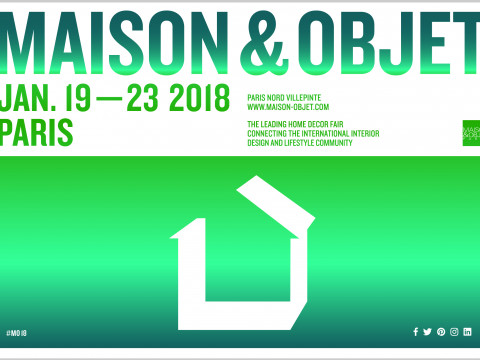
Heinen Delfts Blauw in Paris
Heinen Delfts Blauw will be present at the interior and design fair of Europe from 19 to 23 January: Maison et Objet. We will show the results of our collaborations with the various Dutch designers.
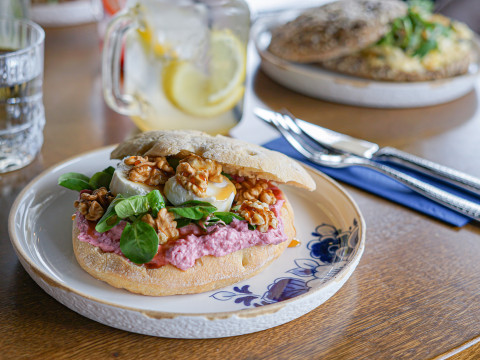
Lekker Blauw: culinary shopping café full of Delft blue!
Taste the world of Heinen Delfts Blauw. In addition to our regular stores full of pottery and fun home decorations, we have now also opened a shopping café. Here you can enjoy delicious food and shop the most beautiful items from our new collections.
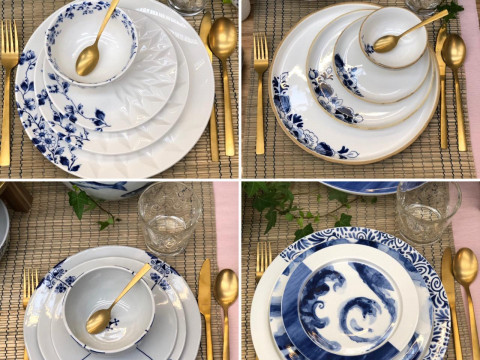
Heinen Delft Blue at Horecava 2020
Have dinner in a restaurant, enjoy a few drinks in the bar and spend the night in a comfortable hotel. For a lot of people it is one of the favourite things to do in the weekends. The Horecava fair shows the latest trends for the catering industry and the ever changing world of foodretail and foodservice. Heinen Delft Blue presents their beautiful Delft blue tableware at Horecava.
